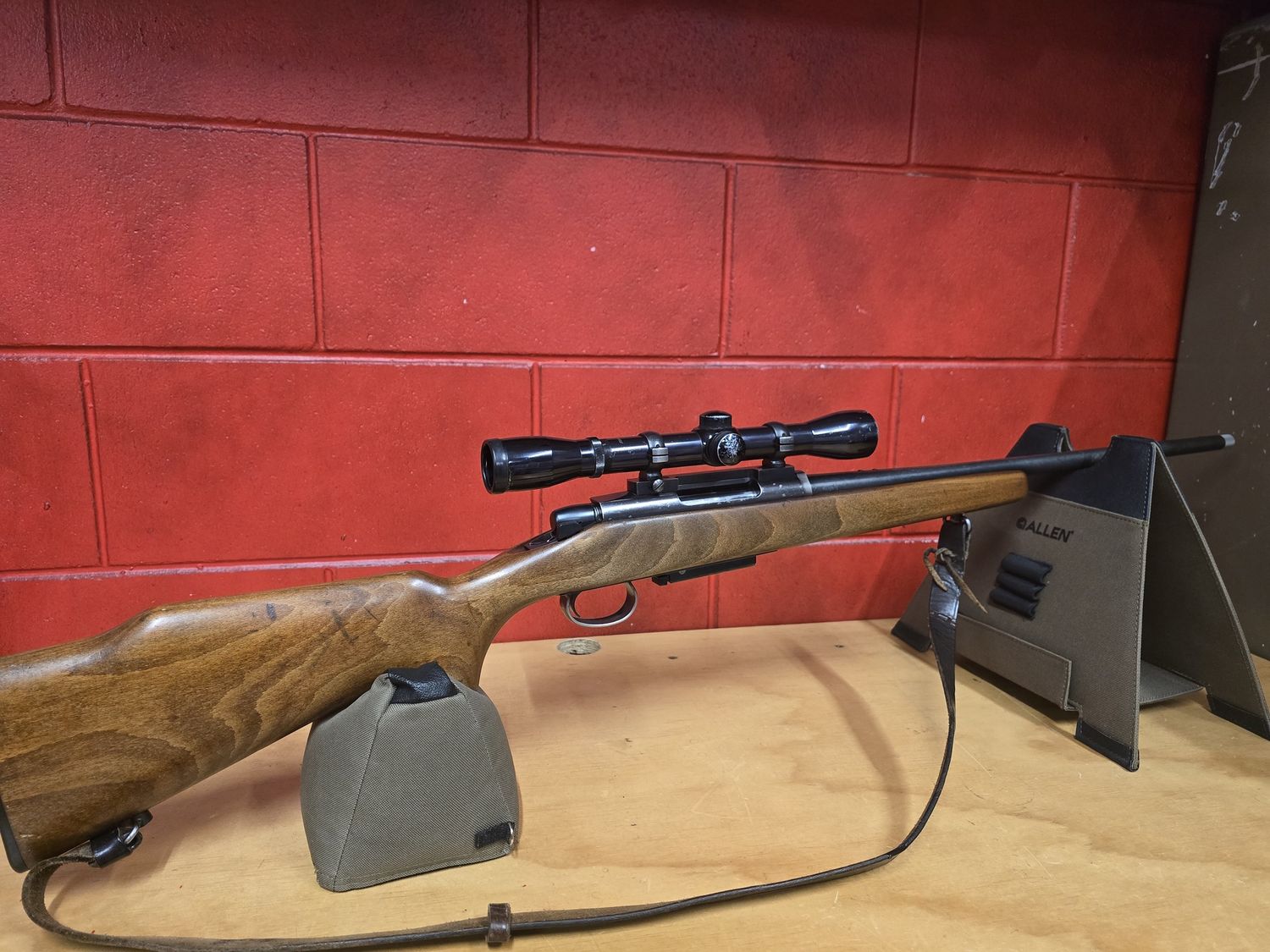Shop directly through the Kilwell website and get your order shipped to Kelly Country store, freight free!
6mm Remington Model 788 Left Handed
$600.00
Price incl. GST (15%) $78.26
Show availability at pickup locations
If the product you need is not available at the pickup location, you can choose another delivery method at checkout. Note that in-store prices may differ from online prices.
In stock: 1 available
1
Product Details
Brand: Secondhand Rifle
This is a secondhand 6mm Remington Model 788, has a Bushnells 4 x Banners, in used condition.
By Layne Simpson
When the Model 788 came off the production line in 1967, Remington promoted it as an out-of-the-box tack-driver for value-conscious hunters and varmint shooters.
The Monte Carlo-style stock was walnut-finished hardwood with no checkering. Made of chrome-moly bar stock, the receiver was drilled and tapped for scope mounting.
In 1969 left-handed shooters across the country rejoiced when Remington introduced a Model 788 in 6mm Rem. with the bolt handle over on their side. Well, actually the bolt was on the left side but cases were ejected to the right.
Capacities of the steel single-stack detachable magazine are four for the .222 and .223 and three for the others. Pushing forward on a tab at the rear of the magazine frees it to drop into the hand. Single-loading over an empty magazine is as easy as tossing a cartridge in the ejection port and slamming the bolt home.
The Model 788 has a number of interesting design features, beginning with the bolt. Three evenly spaced rows of three locking lugs, each positioned toward the rear, result in an extremely well-balanced locking support. While each of the nine lugs is rather small, their combined shear area exceeds that of some two-lug designs, such as the Model 1898 Mauser and the Winchester Model 70. The result is exceptional breech strength.
Due to a shortened and therefore steeper cocking cam, the multiple-lug bolts of some rifles are difficult to rotate to full firing pin compression, but the bolt lift of the 788 to be about the same as for the Remington 700.
The 788 inherited its extractor, ejector and recoil lug designs from the Model 700, but commonality between the two rifles pretty much ends there. Bolt wobble is reduced by a spring-loaded guide in the trigger housing that projects upward to engage a slot in the bottom of the bolt. Holding the safety in its forward position releases the bolt for removal from the receiver.
The extremely rigid and thick-walled receiver is a big contributor to the Model 788’s accuracy. Shaping, drilling, reaming and forming locking lug seats inside this extremely heavy cylindrical receiver required more machining operations than for the Model 700 receiver, therefore it was more costly. And while the receiver diameter was a bit smaller than for the Model 700 receiver, it had greater bedding surface area.
Eliminating raceways for front-located locking lugs in the thick wall of the receiver resulted in an extremely stiff action which was conducive to accuracy.
Like other rear-locking action designs, the Model 788 also has a negative side when compared to a front-locking action. During firing, momentary receiver stretch and bolt compression increase as chamber pressure does, and therefore the force applied to the face of the breech bolt increases. While not a safety issue and of no concern for those who stick with factory ammo, increased case stretch will usually require full-length resizing of cases prior to reloading more often than for a front-locking action. Even so, doing so has no effect on accuracy.
The non-adjustable trigger—consisting of a sear and finger piece of sintered metal and a zinc housing—appears to be about as cheap as you can get, but those I have used through the years have proved to be durable and trouble-free. Quality varied from just usable to quite good, and it could vary from rifle to rifle. The best one I have pulled is on a 788 carbine that I still have. It breaks crisply at 2.25 pounds without creep or overtravel. As originally designed, when the two-position, trigger-blocking safety at the right side of the receiver tang was in its engaged position, the bolt could not be rotated. In 1975 the design was changed to allow bolt rotation with the safety engaged. Which is better? I have hunted all over the world with rifles having both safety designs and have yet to experience an issue with either.
Why did Remington cease production of the Model 788 in 1984, with more than half a million units built? According to a Remington official, production cost proved to be only slightly less than for the Model 700, and since until the very end the 788 sold for quite a bit less, the profit margin did not justify its slot in the company’s rifle lineup.
I will close with my favorite Model 788 story. Quite a few years ago, the gun club I belong to was on the national circuit for registered benchrest matches, and big names from all over the country attended matches there. I competed in a number of those matches. The club also held non-registered “fun” matches in which only factory rifles could be used. Two classes were contested: one for heavy-barrel varmint rifles, the other for deer rifles. The deer rifles had to be factory original with no custom modifications, but any scope magnification was acceptable. After shooting a couple of those matches, I received one of the first Remington Model 788 carbines in 7mm-08 to be produced in 1980. The little rascal proved to be exceptionally accurate with deer loads, so I tried it with 168-grain MatchKings, and it consistently placed five inside a half-inch at 100 yards.
So I began shooting it in the club deer rifle matches, which included .22 centerfires because they were legal for deer in my state. A guy shooting a Remington Model 700 in .222 Rem. was dominating the deer rifle matches. His reign ended when I began shooting the 788 wearing a Weaver T16 scope. It seldom happens, but if a competitor in a registered benchrest match believes the rifle a fellow competitor is shooting is not in compliance with the rules and specifications, he or she can file a complaint with match officials. That rifle is then closely inspected, and if it fails to meet the test, its owner is disqualified and money put up by the protester is returned. If the rifle passes the test, its owner receives the money.
Most of us participated in those club matches just for the fun of it, but the owner of the Model 700 in .222 was an exception and took them a bit too seriously. After being beaten several times by that homely little 788, he filed a protest against it. A gunsmith who was shooting in the match removed the barreled action from the stock, and after thorough examination he, along with match officials, declared it 100 percent factory original. I donated the protest money to the club.
SKU 18283
Save this product for later
6mm Remington Model 788 Left Handed
Display prices in:NZD

